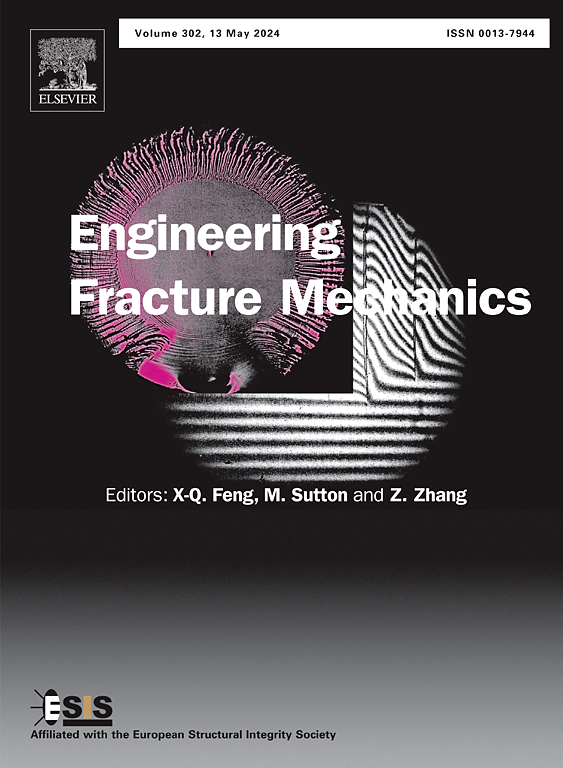Peridynamics-coupled finite element method implication in concrete material crack prediction
IF 4.7
2区 工程技术
Q1 MECHANICS
引用次数: 0
Abstract
This study presents a multi-bond element stiffness matrix to couple peridynamics with the finite element method, where mass points are denoted as elements with the degree of freedom to have a certain number of mass points. The proposed peridynamics-coupled finite element method (PDFEM) based on multi-bond element is demonstrated to be effective in the crack and fracture prediction of concrete materials. In addition, experimental test results and the compression and bidirectional load numerical simulations’ results are compared, and good agreement is observed. In the single compression simulation of concrete specimen, fracture crack occurs along with the compression load direction. In bidirectional load simulations of concrete specimen, different settings of load lead to changeable fracture cracks. Furthermore, the comparison with finite element method (FEM) also shows good agreement. The crack, mass point fracture percentage, and stress state of the concrete specimen are investigated under different load conditions and simulation times, and the results demonstrate a promising prospect of the proposed PDFEM in the field of fracture prediction of concrete materials.
周边动力学耦合有限元法在混凝土材料裂缝预测中的意义
本研究提出了将周动力学与有限元方法耦合的多结合单元刚度矩阵,其中质量点表示为具有一定数量质量点自由度的单元。所提出的基于多结合单元的周动力学耦合有限元法(PDFEM)在混凝土材料的裂缝和断裂预测中证明是有效的。此外,实验测试结果与压缩和双向载荷数值模拟结果进行了比较,发现两者具有良好的一致性。在混凝土试样的单向压缩模拟中,断裂裂缝沿压缩荷载方向出现。在混凝土试样的双向荷载模拟中,不同的荷载设置会导致断裂裂缝的变化。此外,与有限元法(FEM)的比较也显示出良好的一致性。研究了不同荷载条件和模拟时间下混凝土试样的裂缝、质量点断裂百分比和应力状态,结果表明所提出的 PDFEM 在混凝土材料断裂预测领域具有广阔的前景。
本文章由计算机程序翻译,如有差异,请以英文原文为准。
求助全文
约1分钟内获得全文
求助全文
来源期刊
CiteScore
8.70
自引率
13.00%
发文量
606
审稿时长
74 days
期刊介绍:
EFM covers a broad range of topics in fracture mechanics to be of interest and use to both researchers and practitioners. Contributions are welcome which address the fracture behavior of conventional engineering material systems as well as newly emerging material systems. Contributions on developments in the areas of mechanics and materials science strongly related to fracture mechanics are also welcome. Papers on fatigue are welcome if they treat the fatigue process using the methods of fracture mechanics.

 求助内容:
求助内容: 应助结果提醒方式:
应助结果提醒方式:


